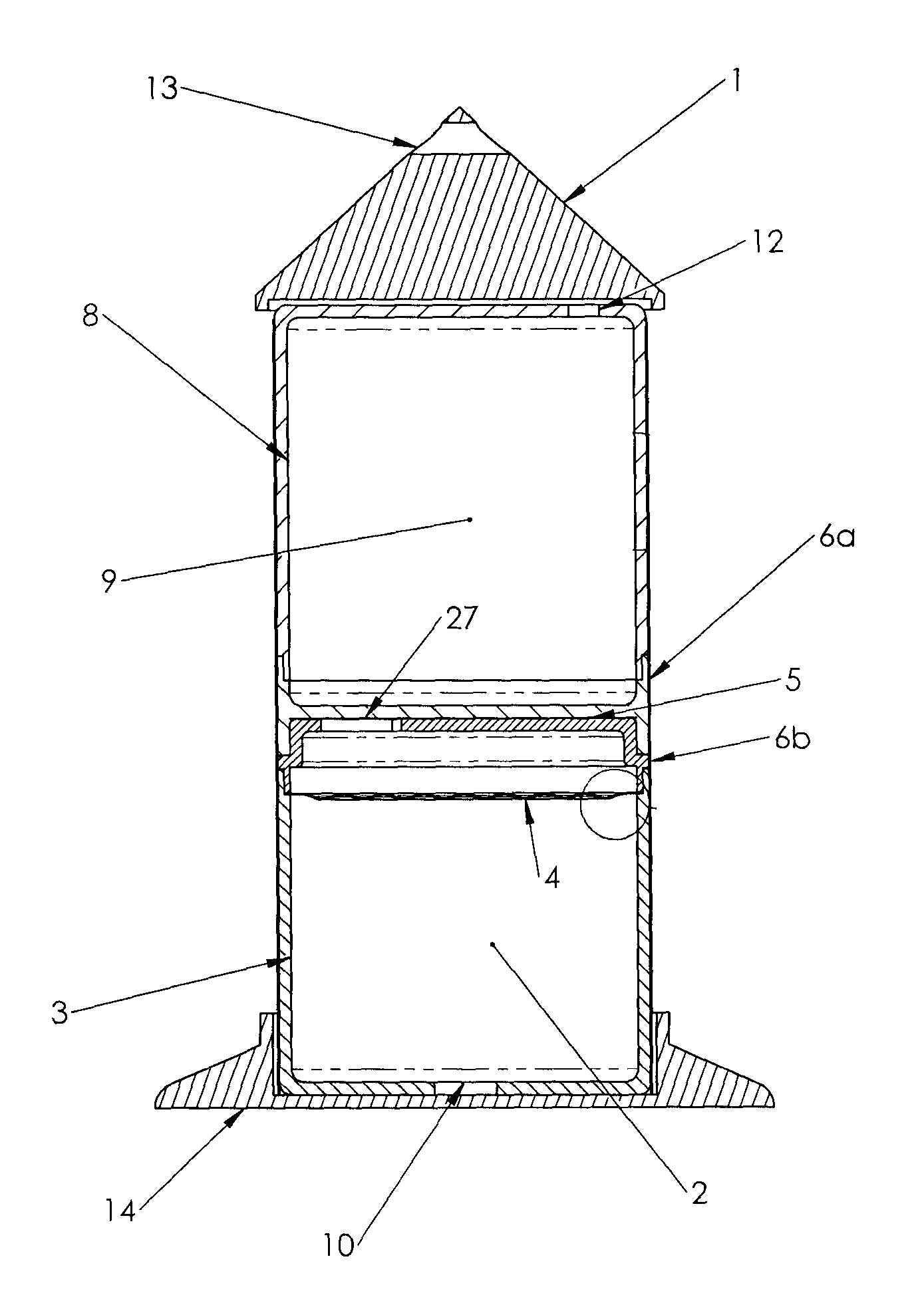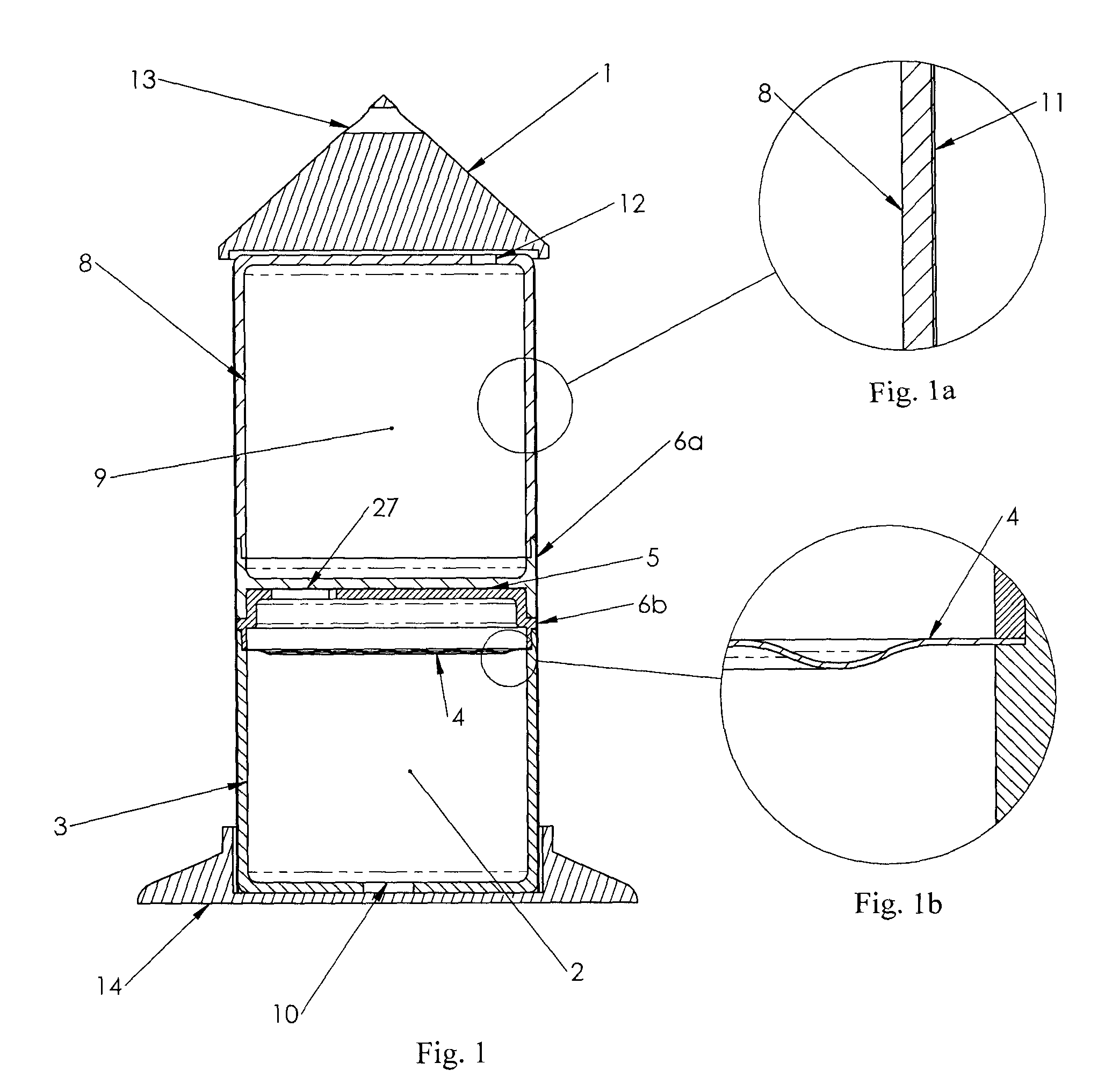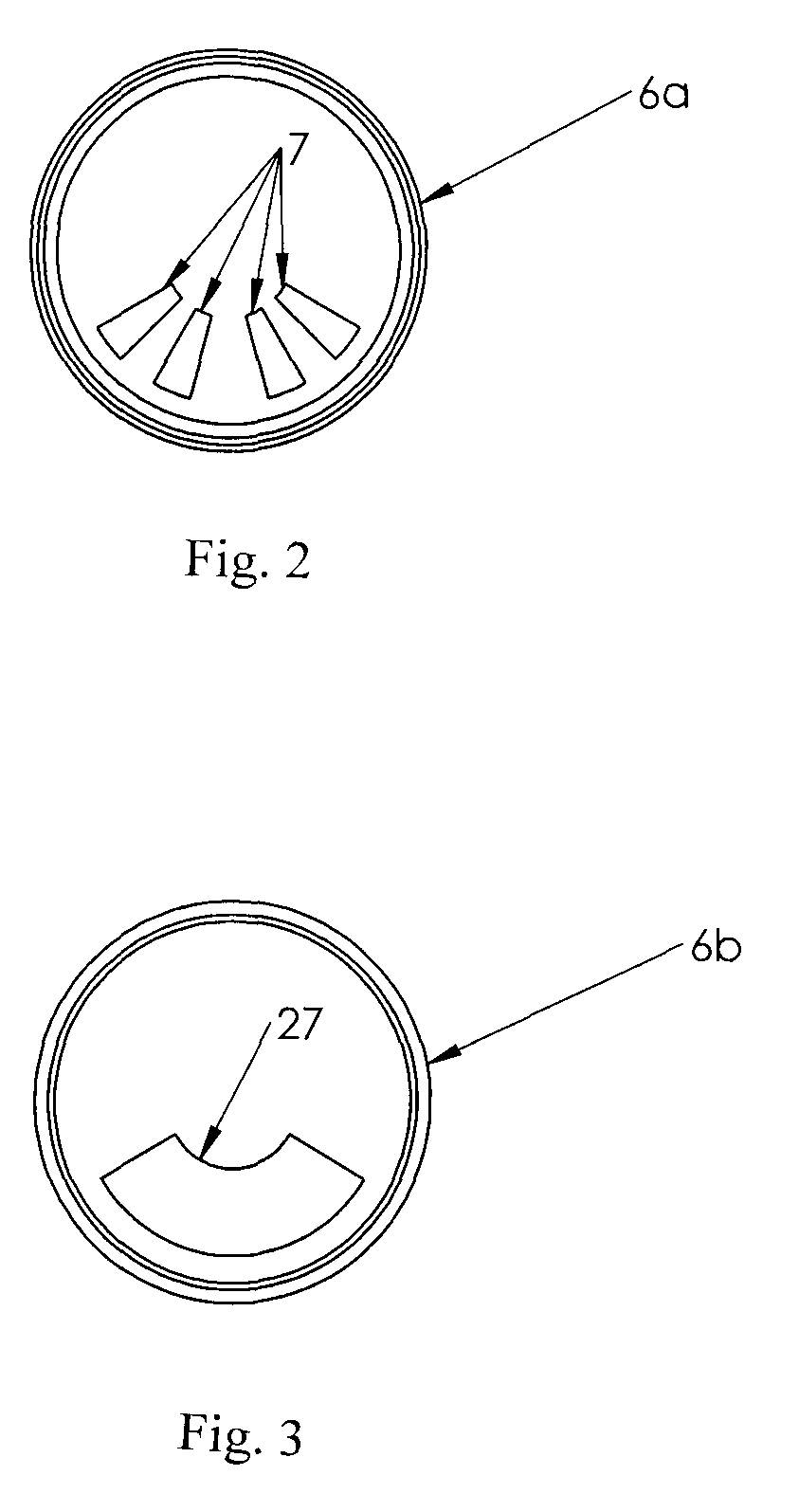Apparatus and method for delivering beneficial liquids at steady rate
a steady rate, liquid technology, applied in the direction of transportation and packaging, animal husbandry, agriculture, etc., can solve the problems of large impact on the dispense rate, unsatisfactory type of system, and very temperature dependent water vapor pressure, so as to prevent water from spilling and prevent the effect of spillag
- Summary
- Abstract
- Description
- Claims
- Application Information
AI Technical Summary
Benefits of technology
Problems solved by technology
Method used
Image
Examples
Embodiment Construction
[0030]The invention has been developed in response to the present state of the art and, in particular, in response to the problems and needs in the art that have not yet been fully solved by currently available devices for delivering liquid beneficial agents such as fragrances, de-odorizers, sanitizers, pesticides and pest repellants. Such devices either suffer from a decline in delivery performance over time to the point that the benefits are no longer rendered or when the devices are active and have acceptable performance, the devices are complex in nature which results in high cost. Accordingly, the invention has been developed to provide novel apparatus and methods for delivering liquid beneficial agents to target areas in a controlled and predictable manner and where impact of temperature variation is minimal. The features and advantages of the invention will become more fully apparent from the following description and appended claims and their equivalents, and also any subseq...
PUM
 Login to View More
Login to View More Abstract
Description
Claims
Application Information
 Login to View More
Login to View More - R&D
- Intellectual Property
- Life Sciences
- Materials
- Tech Scout
- Unparalleled Data Quality
- Higher Quality Content
- 60% Fewer Hallucinations
Browse by: Latest US Patents, China's latest patents, Technical Efficacy Thesaurus, Application Domain, Technology Topic, Popular Technical Reports.
© 2025 PatSnap. All rights reserved.Legal|Privacy policy|Modern Slavery Act Transparency Statement|Sitemap|About US| Contact US: help@patsnap.com



